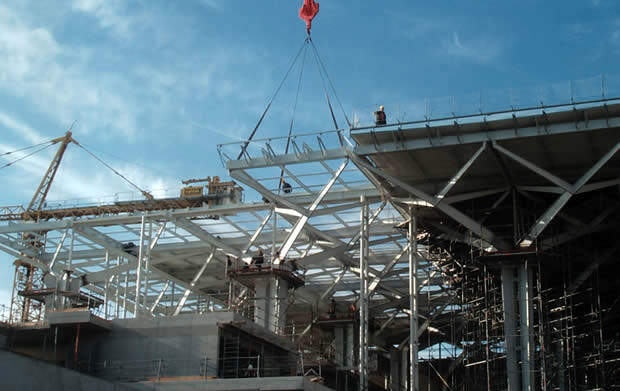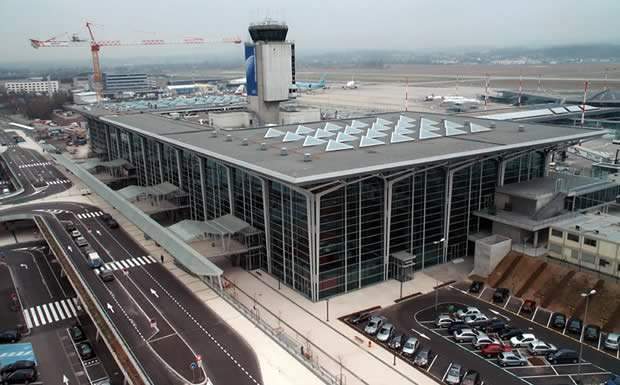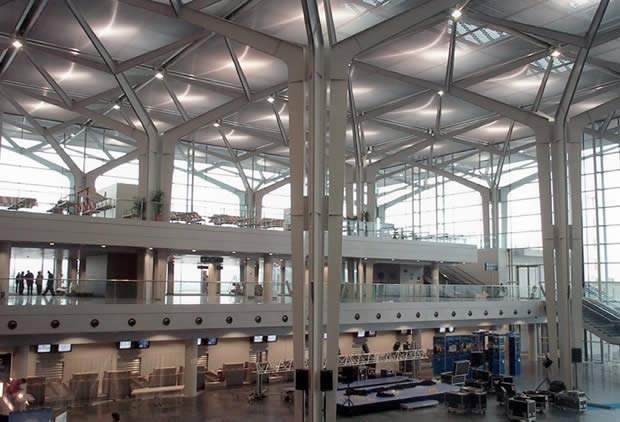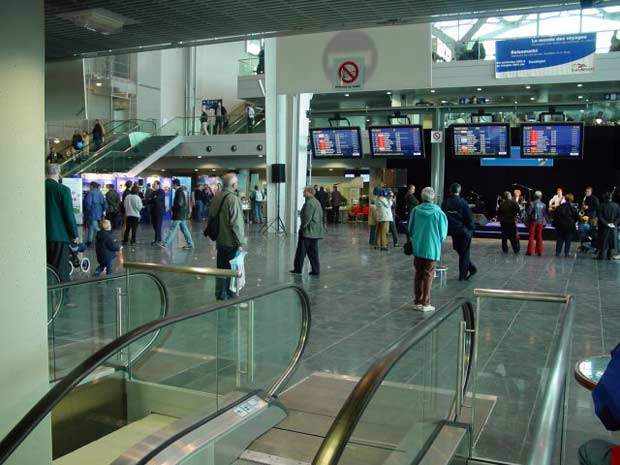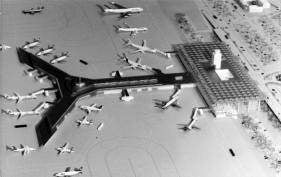Basel-Mulhouse-Freiburg is one of the only airports in the world jointly operated by two countries. It is operated by both France and Switzerland but is administered under French law.
The airport was constructed between 1945 and 1946 following a decision by France and Switzerland about the need for a jointly run airport facility for cargo and passengers.
The bi-national airport lies about 3km beyond the city limits of Basel on French territory and is the second largest cargo airport in France, aside from Paris Charles de Gaulle, and is also Switzerland’s third largest airport.
The airport is an important hub in Europe and serves about 15 other airports all around the world with cargo and air freight.
The goods transported, about 125,000t in total, are varied and they reflect the diversity of the economic region the airport serves (north-western Switzerland, the Alsace region of France and the south of Baden in Germany).
EuroAirport was one of the first to instigate an environmental charter and has since installed a CIEMAS (computer integrated environmental management system) to allow a direct and efficient monitoring of aircraft movements at the airport.
Basel-Mulhouse-Freiburg airport expansion
Because of the steady increase in the volume of passengers using the airport during the late 1990s, the decision was taken to significantly upgrade and expand the facilities at the airport including terminal development and cargo areas.
The expansion project began in 1997 and the majority of the work was completed by 2004. However, some of the major components of the project were not opened until mid-2005 because of negotiations between the French and Swiss officials on the board of the EuroAirport.
The project’s main components were carried out in four main stages. The seven-year project received funding of €260m. Work on the terminal facilities, such as the enlargement of the flight centre, the construction of a Y-shaped finger dock and covered parking spaces, were all part of the project.
Although construction caused some disruption, airport operations were able to continue throughout the whole construction phase.
Plans for renovating the old terminal building were announced on 6 December 2010. Levels 3 and 4 of the terminal building and outsize baggage security control will be renovated over two phases as part of the seven phase renovation.
Passenger numbers at EuroAirport Basel-Mulhouse-Freiburg
EuroAirport hosted 2.7 million travellers in 1997 and this increased to three million by 1998 and 3.6 million by 1999. Studies at this time predicted that facilities would be unable to handle the steadily rising volume of travellers.
Passenger figures for 2005 have shown the airport handled 3.3 million passengers, an increase of 30% on 2004. Obviously the dip in numbers may be attributed to the post 9/11 recovery. By the end of 2010, 4.1 million passengers were handled by the airport.
The main business of the EuroAirport is tourist traffic but it also serves as the gateway to an ever-rising number of business travellers affiliated with a broad range of commercial businesses in the city of Basel and its locality.
In June 2005, EasyJet opened a base at the airport; operating three Airbus A319s contributing to routes between London Luton and Stansted, Berlin Schoenfeld and Liverpool. By 24 March 2011 ten million EasyJet passengers had used the airport.
EuroAirport is also a vital driving force of economic development for the Upper Rhine region and for the four million French, German and Swiss inhabitants who live within an hour’s drive of the airport.
Moder finger dock
During the early stages of the project an ultra-modern finger dock in the shape of a ‘Y’ was constructed.
This was designed to allow passengers to reach their planes on foot via the shortest route (the finger dock is considered to be an international zone and passengers may then cross from there into the French or Swiss sectors).
The parking areas were also expanded during this period, including access from the French sector in the north.
This improvement was designed to accommodate an annual increase in the capacity of EuroAirport from 1.8 million to 3.8 million passengers.
The finger dock was inaugurated in July 2001 and has significantly increased the throughput of passengers at the airport. The finger dock can allow the docking of 23 planes simultaneously.
The French north multistorey car parks one and two were also inaugurated in January 2001, allowing much needed extra capacity for passengers.
Rebuilding the north terminal of Basel-Mulhouse-Freiburg EuroAirport
During the second stage of the project (2000–2001) the north terminal in the French northern sector was completely rebuilt. In the terminal, which was inaugurated in 2002, the public areas are larger, more modern, lighter and more easily accessible.
The terminal also has a range of restaurants, retail areas and lounges for enhanced traveller convenience. During this period of extensive construction work the southern parking areas (in the Swiss sector) were also expanded and access routes to the airport were significantly improved.
The Swiss south car park was inaugurated in September 2001, and also on the Swiss side the access road to the airport car park over a viaduct was completed in December 2001.
South terminal
Work began on the south terminal in the Swiss sector in mid 2002. The terminal was designed to duplicate the architectural style of the north terminal by being a light and transparent structure.
By the end of 2003 the principal construction work on the southern terminal had been completed. The façade consisted of a network of minimalist smooth steel glazing bars supporting a large glazed area that allows the maximum use of natural light at the terminal.
The flat roof was also interspersed with pyramids of glass to allow the maximum use of natural light. The terminal was connected to the northern French terminal by a middle access bridge to connect the French and Swiss sectors for maximum passenger convenience.
The southern terminal building was brought into service in mid 2005 following the completion of services installation (wiring, electronic displays). Wi-Fi services were installed in both main terminals in 2004.
EuroAirport Basel-Mulhouse-Freiburg runways
The airport has a cross configuration of runways with the main north-south (15/33) runway being 3,900m long. Additional major work to be carried out during the project included the lengthening of the east-west (08/26) runway from 1,600m to 1,820m, to increase the use of this runway.
This was completed in 2004 and has resulted in a fourfold increase in the number of take-offs from this runway. Long-term plans still under consideration include a redesign of the cargo facilities at the airport and a new cargo zone.
Repairs to the 15/33 runway are undergoing since 3 May 2010. They will continue up to 9 July 2011.
The repair work will cover 1,530m of the north section of the runway.
Road and rail infrastructure
There are also plans to construct a direct rail link to the airport from the main cities surrounding it by 2010 funding of around €180m is expected to be secured.
The project will be finalised between 2010 and 2013 and the funding will be procured by 2013. Construction will start from 2014. The rail link will be operational by 2017.
Contractors involved
For these projects Dietschy and Vischer were the project managers, Aegerter and Bosshardt AG were the architects. Jacobs and Setes were consulting engineers for the foundations and civil engineering.
Arcora were the consulting engineers for the structure and frontages of the terminal buildings. Eiffel CM and CM Munch were the manufacturers of the terminal building structural components. Acier Construction was one of the construction contractors.






